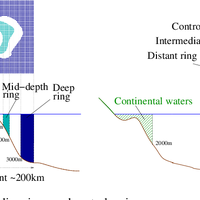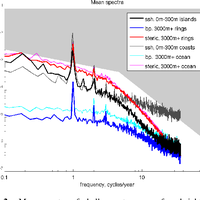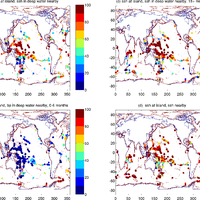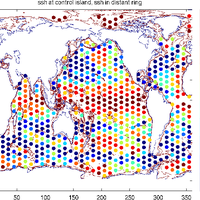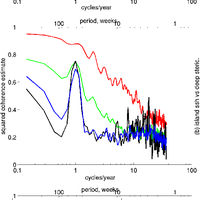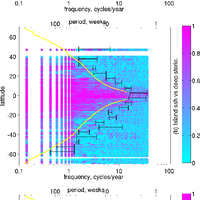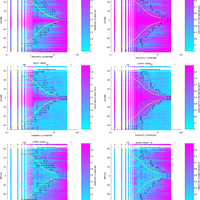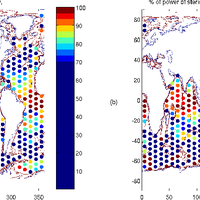Abstract
Studies comparing tide gauge measurements with sea level from nearby satellite altimetry have shown good agreement for some islands and poor agreement for others, though no explanation has been offered. Using the 1/12 OCCAM ocean model, we investigate the relationship between sea level at small, open-ocean islands and offshore sea level. For every such island or seamount in the model, we compare the shallow-water sea level with the steric and bottom pressure variability in a neighbouring ring of deep water. We find a latitude-dependent range of frequencies for which off-shore sea level is poorly correlated with island sea level. This poor coherence occurs in a spectral region for which steric signals dominate, but are unable to propagate as baroclinic Rossby waves. This mode of decoupling does not arise because of islands bathymetry, as the same decoupling is seen between deep ocean points and surrounding rings. © 2012 Author(s).
Figures
Register to see more suggestions
Mendeley helps you to discover research relevant for your work.
Cite
CITATION STYLE
Williams, J., & Hughes, C. W. (2013). The coherence of small island sea level with the wider ocean: A model study. Ocean Science, 9(1), 111–119. https://doi.org/10.5194/os-9-111-2013

